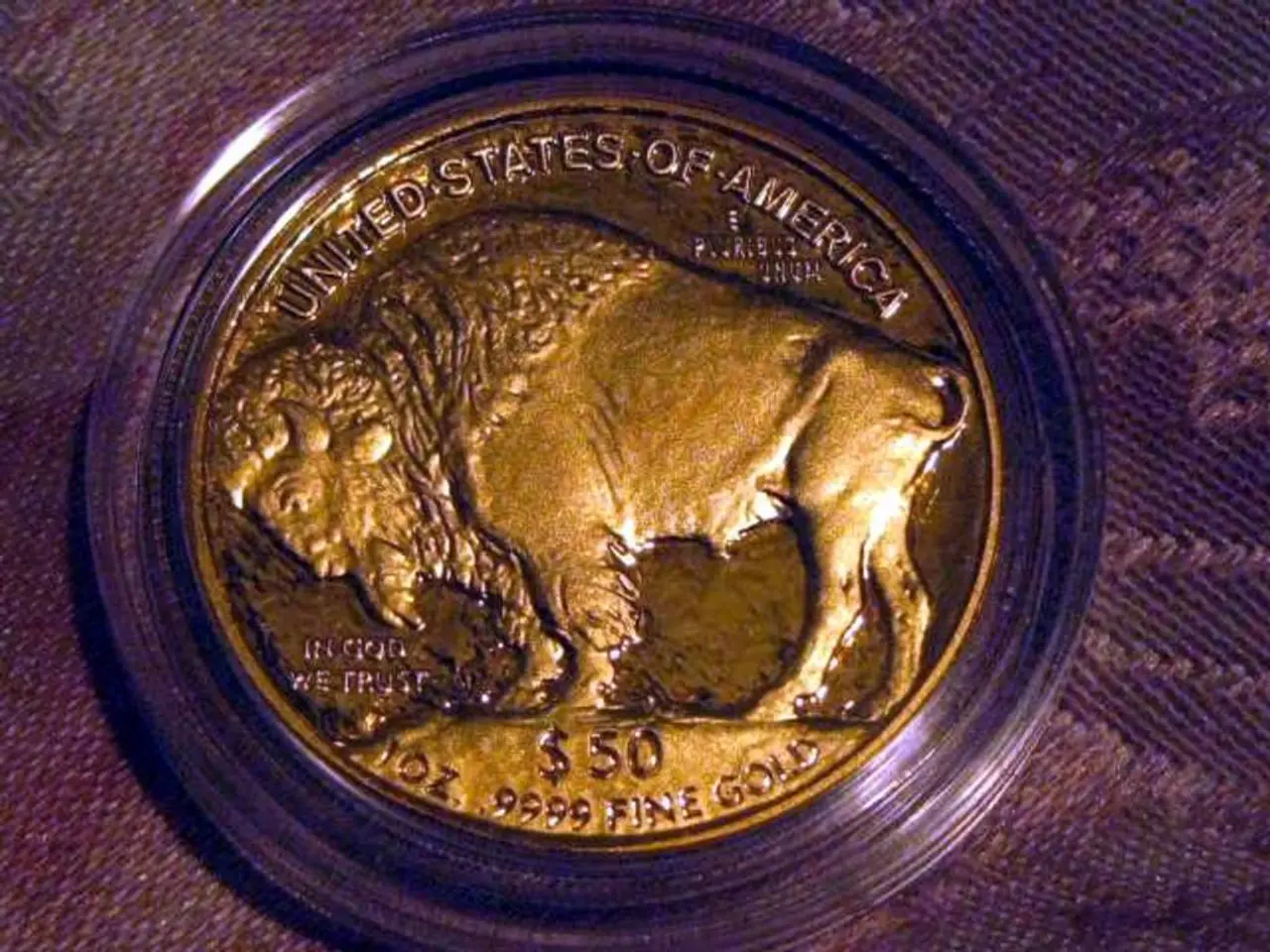Stablecoin giant Tether outlines U.S. expansion plan, shedding light on potential investment implications.
In a significant move, Tether, the world's largest stablecoin issuer, is repositioning its investment strategy in the United States. The shift away from traditional U.S. Treasury bond holdings towards a more diversified portfolio signals a strategic adaptation to both market conditions and regulatory changes.
According to recent reports, Tether's U.S. Treasury bond investments dropped dramatically from $65 billion in Q1 2025 to about $7 billion in Q2 2025, representing an 89% reduction. This dramatic reduction in Treasury holdings comes as Tether's total assets grew to approximately $162.5 billion.
This strategic repositioning aligns with Tether's broader U.S. expansion under the GENIUS Act, where it has launched a U.S.-compliant stablecoin fully backed by U.S. Treasuries or cash and subject to rigorous quarterly audits by licensed custodians. This product targets institutional investors and caters to the growing institutional demand within a regulatory framework designed to ensure federal compliance.
Tether's CEO, Paolo Ardoino, emphasizes rebuilding credibility in the U.S. market with a compliance-first approach, contrasting its previously controversial reputation. Ardoino aims to compete directly with Circle's USDC, which already operates under state licenses and has robust audit practices.
The Trump administration's stance on stablecoins reflects a clear pivot in U.S. crypto regulatory policy. The Trump-Sacks-Atkins leadership has moved away from the enforcement-heavy approach seen during the Biden-Gensler era towards a more market-friendly, innovation-promoting regulatory framework. This shift is intended to provide clarity and legitimacy to stablecoins like Tether's and foster their integration within traditional finance, enabling tokenized assets and widespread digital dollar use cases.
However, experts warn about the risk of implicit government backing and moral hazard as stablecoins grow, given their potential impact on broader financial stability if a major stablecoin like Tether were to face a crisis. This is a concern especially due to Tether's mixed history with compliance and regulatory scrutiny.
As Tether grows, it is likely that new investment opportunities will emerge, ranging from Bitcoin to AI. In emerging markets, stablecoins are primarily used as a hedge against hyperinflation and provide financial services to the unbanked population. A better strategy for investing in Tether might be investing in businesses that are part of Tether's "Pro-America" growth strategy.
Tether has seen increased interest from Wall Street investors in the past year, and its profitability has been highlighted by Cathie Wood of Ark Invest in her "Big Ideas 2025" report. Tether is also investing in U.S.-based artificial intelligence and brain-computer interface companies. If Tether focuses on its "Pro-America" strategy, its plans for the future could align with those of the Trump administration, potentially supporting the "crypto superpower" investment thesis.
Treasury Secretary Scott Bessent has been advocating for stablecoins to make America a "crypto capital of the world" and a "crypto superpower." However, Tether is privately held and has no plans for an IPO at the moment. Bloomberg suggests that Tether might get more involved in the U.S. stablecoin market, focusing on large institutional investors for cross-border transactions and instant settlement.
The passage of the GENIUS Act earlier this summer outlines the rules of the road for stablecoins. The U.S. stablecoin payments business is characterized as "a race to the bottom" by Tether CEO Paolo Ardoino. The second-largest stablecoin issuer, Circle Internet Group, went public in a splashy IPO in June.
Despite the regulatory acceptance, concerns remain about systemic risks from large stablecoins and potential government backstops, particularly given Tether's past controversies. Tether made over $13 billion in profit last year with fewer than 200 employees. You can buy the Tether stablecoin on a cryptocurrency exchange, but it will always trade for $1, requiring the use of decentralized finance (DeFi) yield strategies to make a profit.
The Trump administration has been promoting the role of stablecoins in the U.S. economy. Only four companies in the S&P Financial Services Select Sector Index made more money than Tether in the first half of 2024. Tether has no immediate plans to offer stablecoin payment products to Americans due to competition.
In summary, Tether's strategic repositioning in the United States reflects a shift towards a more diversified investment portfolio and a compliance-centric approach under the GENIUS Act. The Trump administration's regulatory posture supports stablecoin legitimacy and innovation, favoring regulatory clarity over enforcement, which aligns well with Tether's strategy. However, concerns remain about systemic risks from large stablecoins and potential government backstops, particularly given Tether's past controversies.
Tether's investment strategy now involves a more diverse portfolio and reduction in U.S. Treasury bond holdings, with a $58 billion decrease from Q1 to Q2 2025. This shift aligns with Tether's U.S. expansion, aiming to compete with Circle's USDC in the artificial intelligence sector. The Trump administration's regulatory framework encourages stablecoin legitimacy, fostering their integration within traditional finance and technology, potentially leading to widespread digital dollar use cases.




